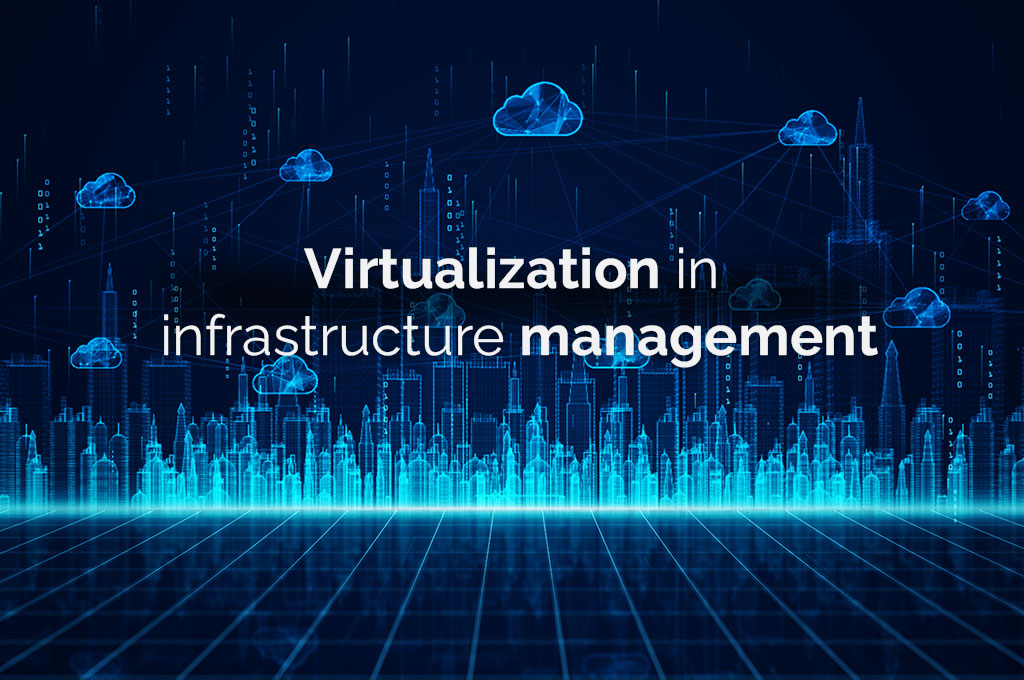Virtualization in infrastructure management
14. July 2022.
Today’s world of technology offers many solutions that need to be utilized to the maximum in order to enable optimal operation and stability for organizations.
One of such solutions is infrastructure management within organizations.
Wondering what it is? Infrastructure management refers to the management of all important assets and resources of an organization, such as equipment, data and manpower, with the aim of enabling the smooth functioning of network building services.
This process can be long and demanding, and it is necessary to find solutions that will facilitate it, which brings us to the concept of virtualization.
What is virtualization?
Simply said, virtualization means creating a virtual version of something – in this case, creating a virtual version of a server, desktop or an operating system.
Rationalization is another name for virtualization. Tasks that would normally be performed by many computers with virtualization can be performed by one. With virtualization technology, we can make maximum use of available resources and thereby reduce the costs of complex IT infrastructure.
The concept is relatively simple – all previous application servers and other servers become “roommates” on one computer. They receive allocated space and resources as needed, and they are logically separated even though they are physically on the same computer.
Reduced costs do not come only in the form of a lower electricity bill – this type of system is easier to maintain due to its centralization, monitoring becomes much less of a problem and everything is in one place. A huge advantage is that, unlike a conventional computer, you can easily make a backup of the entire operating system, transfer it to another computer or disk and secure all data. When upgrading the system, all virtual computers can be accessed centrally, which saves time.
There are two types of virtualization, both widely used. We will help you choose the best one for your business:
- Hypervisor 1 – connects directly to the hardware
- Hypervisor 2 – connects to the operating system and is a much better option for smaller organizations
What role does virtualization play in infrastructure management?
To put it briefly, the concept of virtualization is used to manage infrastructure more efficiently.
Why?
Because managing the entire infrastructure of an organization requires a lot of software, IT administrators and manpower, which increases costs and takes up a lot of time. The process of virtualization reduces the costs of maintenance and cooling of the equipment and task implementation time. It also acts as the first step towards the migration of the infrastructure to a cloud.
A real life example
Let’s say you have one or more shops and a server that hosts an accounting program, for example Synesis or Wand. All sales staff must be able to access the program as well as external associates and warehouse workers, who need to use applications for inventory and procurement of goods.
By virtualizing separate servers, you can easily manage the access permissions of your employees and external collaborators, and set up virtual servers so that access to one program is not a security breach for another. You can also update the server software version depending on the needs of the applications and thus avoid data loss, potential industrial espionage and service unavailability caused by conflicts in application configurations. Remote stores or offices can be configured to access only the necessary resources and at the same time secure data from the view of unauthorized people.
How can Ofir help?
This process saves time and money, and you wonder why you haven’t virtualized your business already? Despite all the advantages of virtualization and the simplicity of the concept, the administration of virtual environments requires a certain amount of technical expertise. Few people have time to deal with virtualization and keep up with technology standards in addition to their business. That’s where we step in – we’ve perfected virtualization to such an extent that you no longer even need to have your own server. You describe to us what you need, and we will find a solution for your specific case.
We are here for you regarding all questions and concerns, and for the implementation of the virtualization process in your organization.

